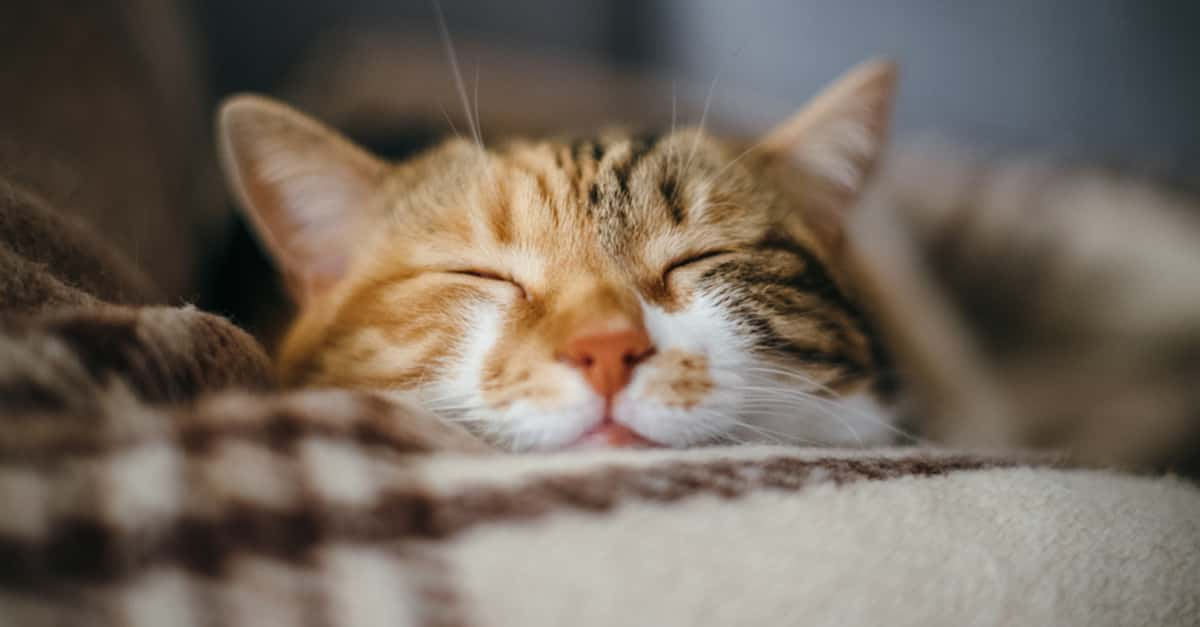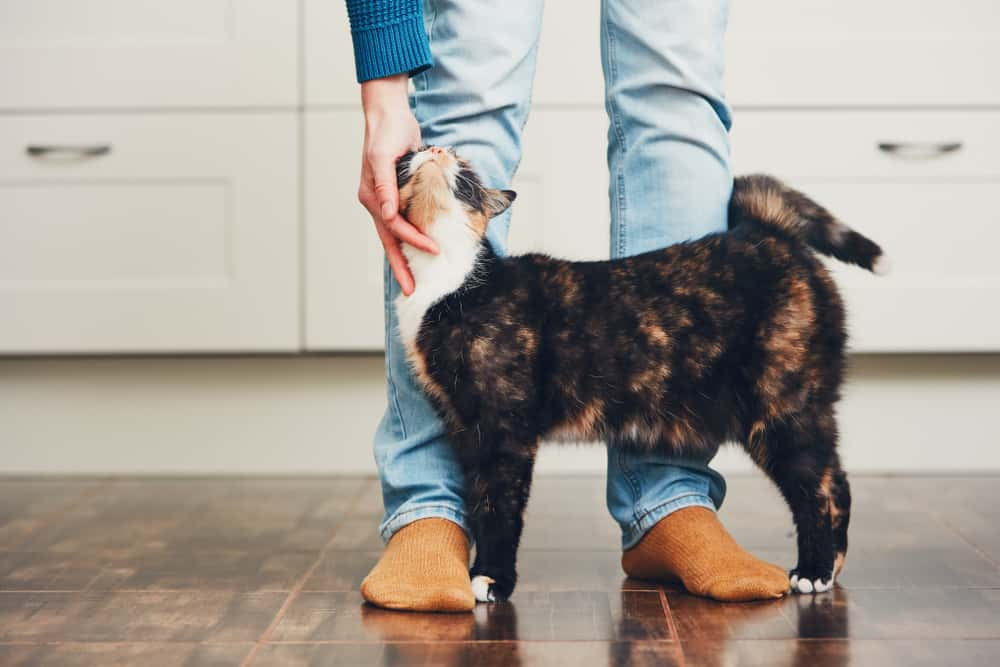I Knead You to Purr
Sometimes, a nice purr from a cat may be accompanied by a more kinetic expression of contentment: the knead. This is when a cat moves their paws up and down as if they were a human kneading bread, pushing their paws down and extending their claws before lifting up again. It’s often a precursor to sleeping, and because it’s generally done to a soft surface—for example, a lap, a blanket, or a couch—it’s been suggested that it’s an evolutionary remnant of when cats would tamp down grass or other organic matter outdoors to sleep on. It may also be related to the action of newborn kittens kneading the mother in order to properly latch for feeding. Some cats may even adopt a favorite blanket for performing their act of kneading and purring!
The beneficial effect that the presence of animals can have on humans is well-known—think of all those programs now where cats or puppies are available to comfort those in need in hospitals, nursing homes, schools, and airports. And for us humans who are lucky enough to have a happy cat around, the cat’s purr can have a relaxing effect as well. People generally associate the sound with peacefulness and tranquility. We may also be hard-wired to respond to purrs as well, since the lower frequencies in a purr aren’t that far off from the frequencies in a baby’s cry. These associations work to draw pet owners closer to their feline charges—a situation that’s good for both the cat and their human!
The Final Word on Purr
Even after a slew of scientific research, the “how” of purring is still a mystery—but there seems to be a consensus on the “why,” at least most of the time. If your cat is purring, there’s a good chance they’re feeling content—and if you have a chance to sit with them and soak it up, it may just rub off on you too!












